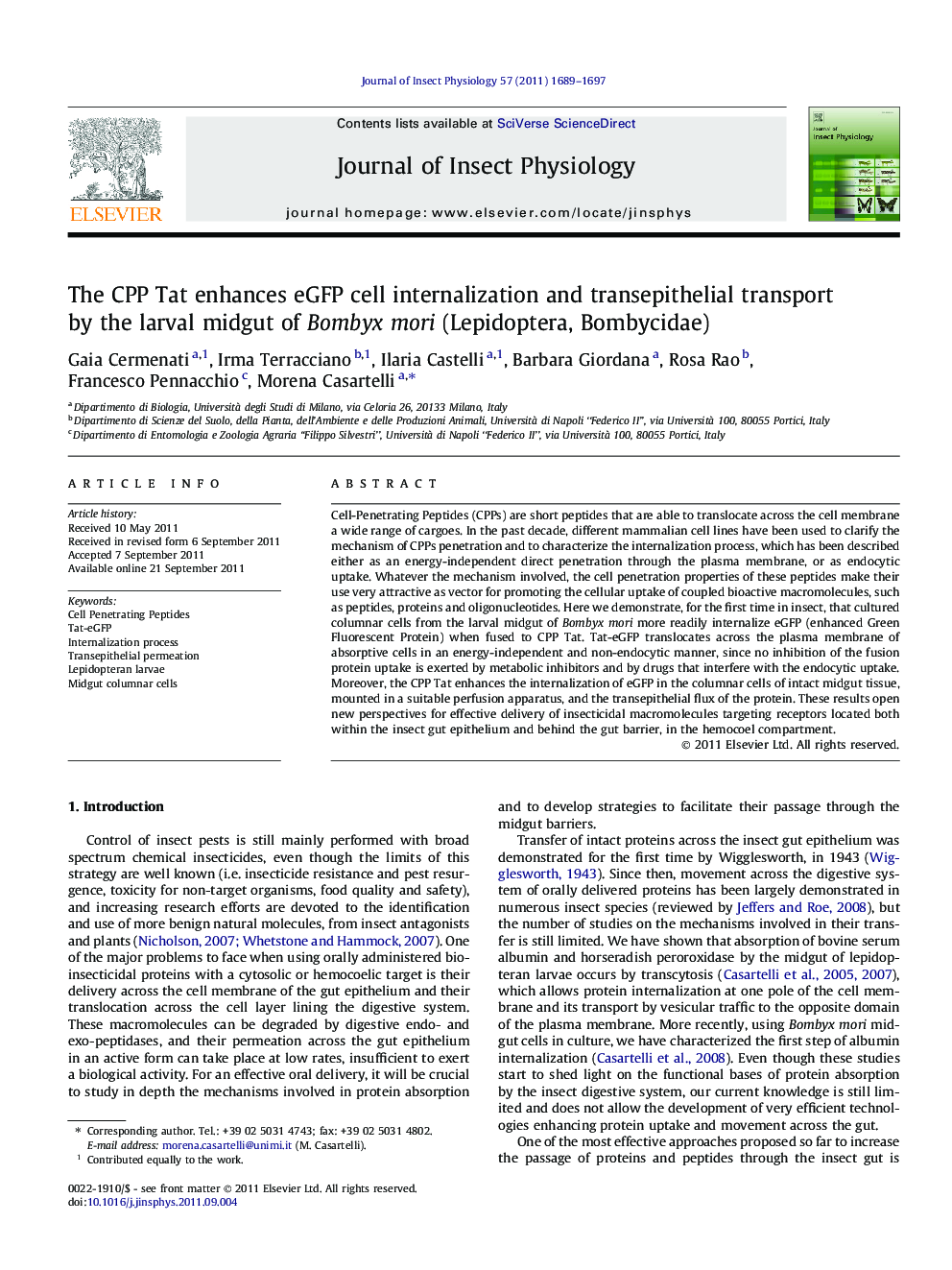| Article ID | Journal | Published Year | Pages | File Type |
|---|---|---|---|---|
| 2840770 | Journal of Insect Physiology | 2011 | 9 Pages |
Cell-Penetrating Peptides (CPPs) are short peptides that are able to translocate across the cell membrane a wide range of cargoes. In the past decade, different mammalian cell lines have been used to clarify the mechanism of CPPs penetration and to characterize the internalization process, which has been described either as an energy-independent direct penetration through the plasma membrane, or as endocytic uptake. Whatever the mechanism involved, the cell penetration properties of these peptides make their use very attractive as vector for promoting the cellular uptake of coupled bioactive macromolecules, such as peptides, proteins and oligonucleotides. Here we demonstrate, for the first time in insect, that cultured columnar cells from the larval midgut of Bombyx mori more readily internalize eGFP (enhanced Green Fluorescent Protein) when fused to CPP Tat. Tat-eGFP translocates across the plasma membrane of absorptive cells in an energy-independent and non-endocytic manner, since no inhibition of the fusion protein uptake is exerted by metabolic inhibitors and by drugs that interfere with the endocytic uptake. Moreover, the CPP Tat enhances the internalization of eGFP in the columnar cells of intact midgut tissue, mounted in a suitable perfusion apparatus, and the transepithelial flux of the protein. These results open new perspectives for effective delivery of insecticidal macromolecules targeting receptors located both within the insect gut epithelium and behind the gut barrier, in the hemocoel compartment.
Graphical abstractFigure optionsDownload full-size imageDownload as PowerPoint slideHighlights► Tat peptide enhances eGFP internalization into Bombyx mori midgut cells. ► The mechanism of Tat-eGFP internalization is energy-independent. ► The CPP Tat enhances eGFP transepithelial flux in the isolated midgut. ► Our results open new perspectives for the delivery of insecticidal macromolecules.
